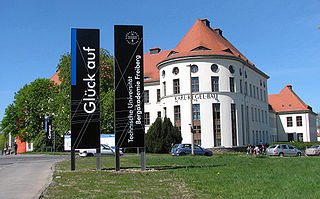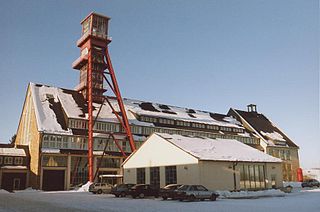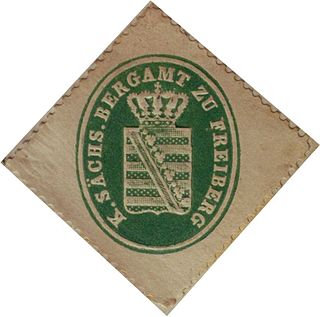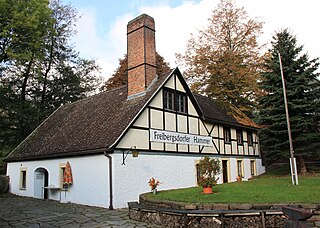Coordinates: 50°55′08″N13°20′52″E / 50.91889°N 13.34778°E

A geographic coordinate system is a coordinate system that enables every location on Earth to be specified by a set of numbers, letters or symbols. The coordinates are often chosen such that one of the numbers represents a vertical position and two or three of the numbers represent a horizontal position; alternatively, a geographic position may be expressed in a combined three-dimensional Cartesian vector. A common choice of coordinates is latitude, longitude and elevation. To specify a location on a plane requires a map projection.

Christiansdorf, historically spelt Christianesdorph in 1183 and Christianisdorf in 1185, was a forest settlement in the Duchy of Saxony (the present day German state of Saxony) that only existed for a few years, but is credited as being the first place in the Ore Mountains that silver ore was discovered. The little mining settlement in the March of Meissen and was a forerunner of the present town of Freiberg, which itself was founded in the 1160s. Christiansdorf was located on the so-called Schüppchenberg hill, where the cul-de-sac of Berggasse now is.

The Waldhufendorf is a form of rural settlement established in areas of forest clearing with the farms arranged in a series along a road or stream, like beads on a chain. It is typical of the forests of central Germany and is a type of Reihendorf, in which each farmstead usually has two wide strips of land adjacent to the farmhouse.

The Duchy of Saxony was originally the area settled by the Saxons in the late Early Middle Ages, when they were subdued by Charlemagne during the Saxon Wars from 772 and incorporated into the Carolingian Empire (Francia) by 804. Upon the 843 Treaty of Verdun, Saxony was one of the five German stem duchies of East Francia; Duke Henry the Fowler was elected German king in 919.

Saxony, officially the Free State of Saxony, is a landlocked federal state of Germany, bordering the federal states of Brandenburg, Saxony Anhalt, Thuringia, and Bavaria, as well as the countries of Poland and the Czech Republic. Its capital is Dresden, and its largest city is Leipzig.
According to oral tradition and legend, the first ore - sterling silver - in the Freiberg Mining Field, and also in the whole Ore Mountains, was discovered on the fields of Christiansdorf by the Schüppchenberg around 1168. [1]

The Freiberg Mining Field is an ore field which, in its widest sense, is located on an ore deposit of precious and non-ferrous metals roughly 35 x 40 kilometres in area in the lower Eastern Ore Mountains in the German Free State of Saxony. The mining region is centred on Freiberg, but extends beyond that town's borough into the municipalities of Halsbrücke, Hilbersdorf, Bobritzsch, Weißenborn, Oberschöna and the boroughs of Brand-Erbisdorf and Großschirma. Mining has been carried out here since the last third of the 12th century. In a narrower sense the name refers to the area covered by the Freiburg and Halsbrück mining territories. The Brand Mining Field immediately to the south comprises just the one mining territory, the Brander Grubenfeld.
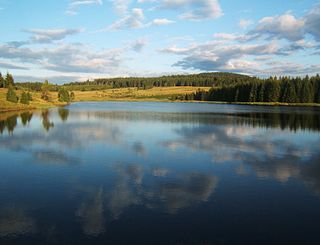
The Ore Mountains or Ore Mountain Range in Central Europe have formed a natural border between Saxony and Bohemia for around 800 years, from the 12th to the 20th centuries. Today, the border between Germany and the Czech Republic runs just north of the main crest of the mountain range. The highest peaks are the Klínovec, which rises to 1,244 metres (4,081 ft) above sea level and the Fichtelberg.



